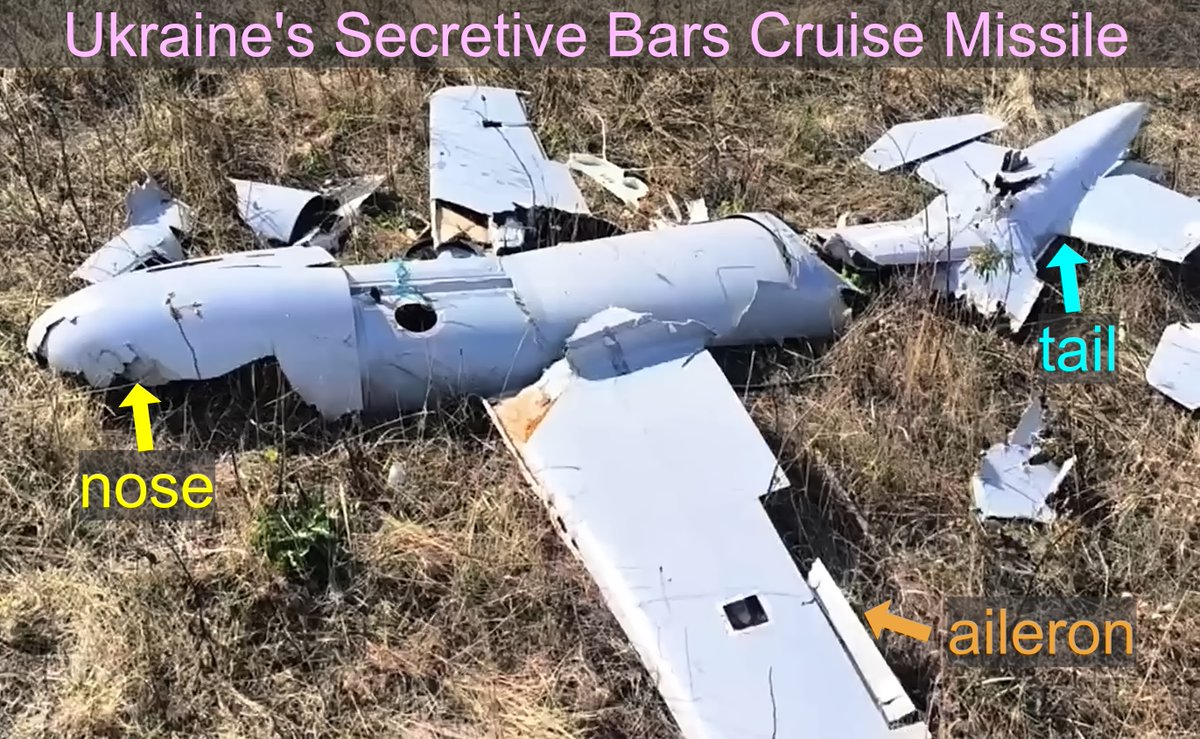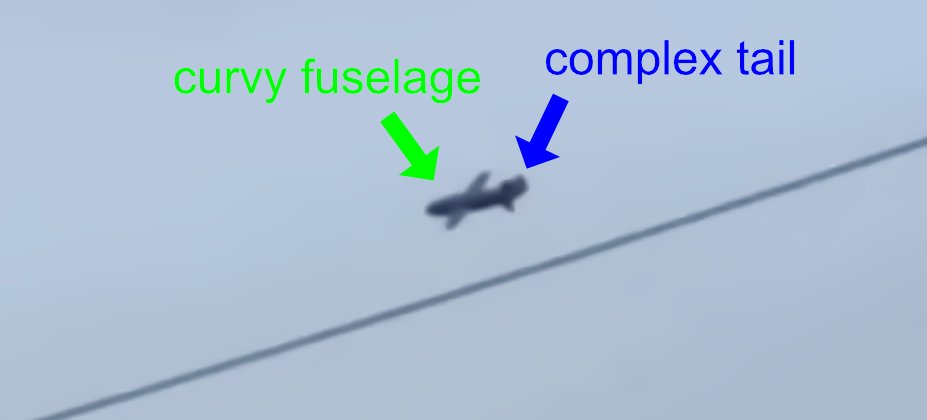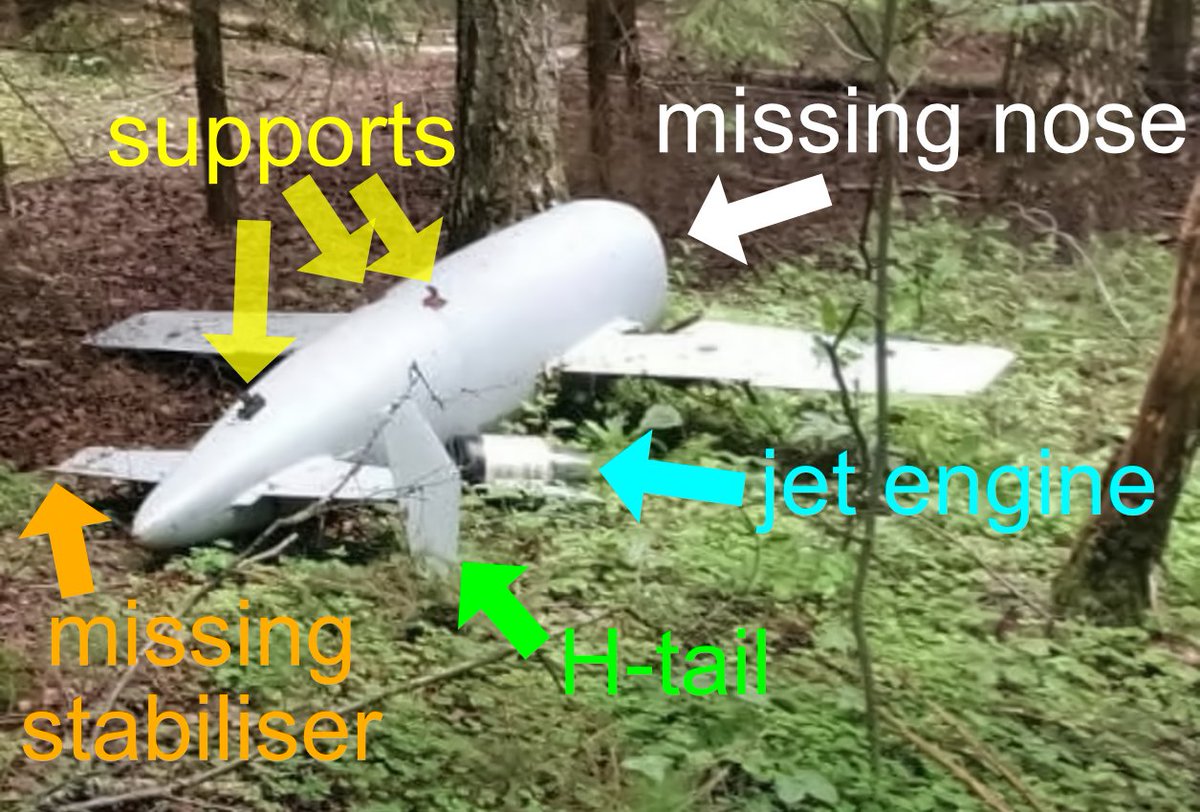1. Ukraine announced that it had tested a long-range “rocket drone” called Palianytsia. Is this weapon, in practice, a cruise missile? This thread is a closer look at this (likely important) weapon. 

2. Other than a few simple sketches & animations, Ukraine has released very few details about Palianytsia. The approach used here was to carefully study this public information with the aim of making a CAD drawing. From this drawing, various design aspects are considered. 

3. How big is Palianytsia? If it uses an AI-PBS-350 turbojet engine, which is a joint project between PBS (Czech Republic) and Ivchenko-Progress (Ukraine), then the size is easily estimated. This engine weighs 51 kg with a maximum thrust of 3,400 N. 

4. This engine has a 30 cm diameter. For drawing, a 40 cm diameter fuselage seemed reasonable to accommodate engine mounts & tail fin actuators. The drone’s overall design is simple (likely to reduce cost) with a cylindrical fuselage, and neither the wings nor tail fins retract. 

5. Palianytsia has 4 main sections. The turbojet is in the very rear. Jet engines burn a lot of fuel so there will be a very large fuel tank over the wing. A heavy warhead is ahead of the wing. Navigation & flight computer are in the nose. 

6. One detail missing from the public information is an air intake for the engine (it needs one). A simple cut-out was added to the drawing but this is only intended as a reminder since there is no information on what the intake really looks like. 

7. There is no indication that there are ailerons. The tail probably uses all-moving fins similar to ones made by Ukraine’s Ukroboronprom. One curious detail shown in the public drawings might be the fuel filler. 

8. The wing tips have an increased dihedral that are likely to improve stability, which is important if there are no ailerons. There is no information on how the wings are attached or if they can be easily removed for transport. 

9. There are 8 hardpoints visible in the public drawings. These hardpoints attach to support rings during assembly and transport. These are a strong hint that Palianytsia is big & heavy. 

10. Here is an example of support rings & stand being used on Ukraine’s R-360 Neptune missile. If the choice of AI-PBS-350 turbojet engine is a correct assumption, then the Palianytsia must be similar in size to the Neptune. 

11. Curiously, Palianytsia does not have a dorsal fin. However, Palianytsia is launched from the ground using a booster rocket. Perhaps the booster is attached in this location? 

12. Palianytsia’s wing is mounted fairly far forward suggesting the nose is heavy. Because the centre-of-gravity is likely through the wing, the warhead would be (very) roughly 200 kg. With an AI-PBS-350 engine it would also be extremely fast (several hundred km/h). 

13. Conceptually, Palianytsia might be a simplified and cheaper version of the Neptune. Why is it called a rocket drone and not a cruise missile? This could be for political reasons, e.g., why would timid western countries supply cruise missiles if Ukraine has its own?
14. If produced in quantity, Palianytsia would likely cause very big problems for russia.
If you found this thread interesting, please repost as a quote. Respectful comments are always welcome. Also consider reading my previous threads listed under “Highlights”.
If you found this thread interesting, please repost as a quote. Respectful comments are always welcome. Also consider reading my previous threads listed under “Highlights”.

15. (ps) Palianytsia looks like a cruise missile but I like the name “rocket drone” for a number of reasons. Note that the CAD drawing was a lot of effort to produce. If you liked it, please let me know.
• • •
Missing some Tweet in this thread? You can try to
force a refresh






















